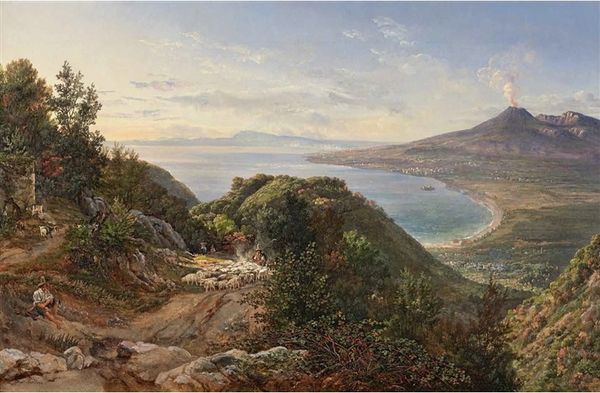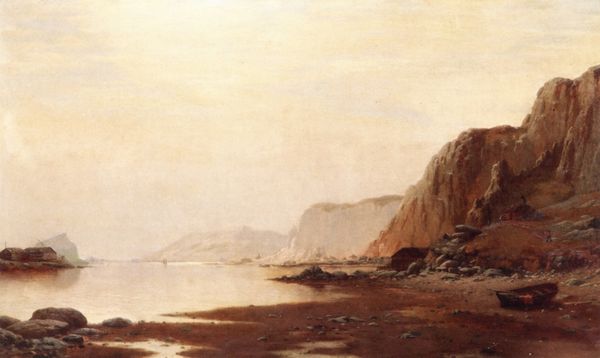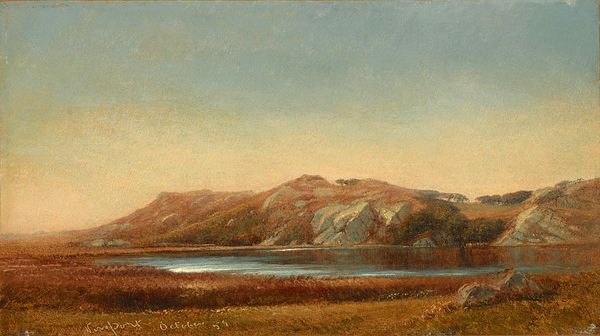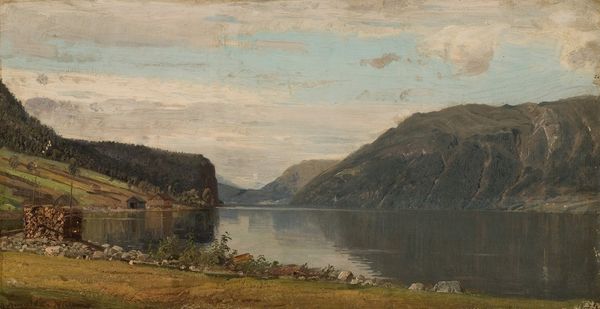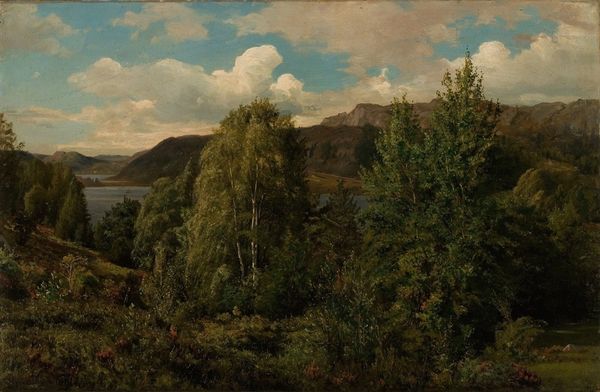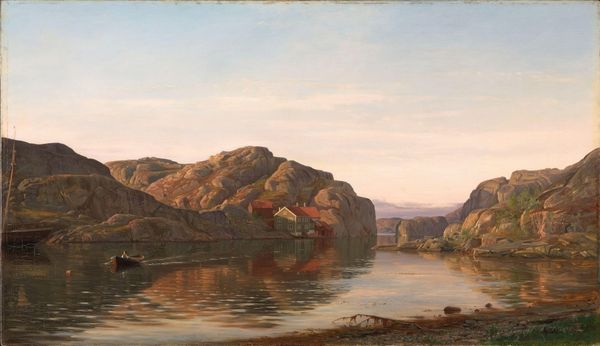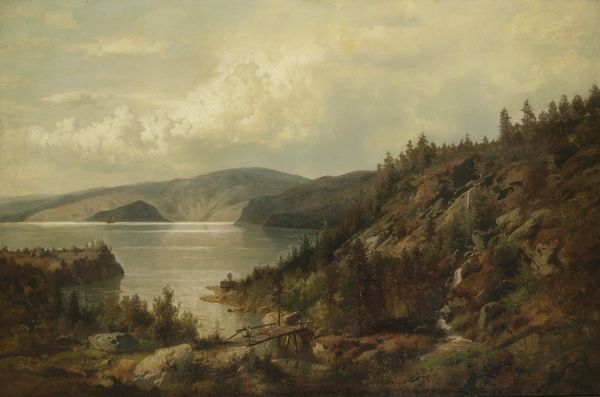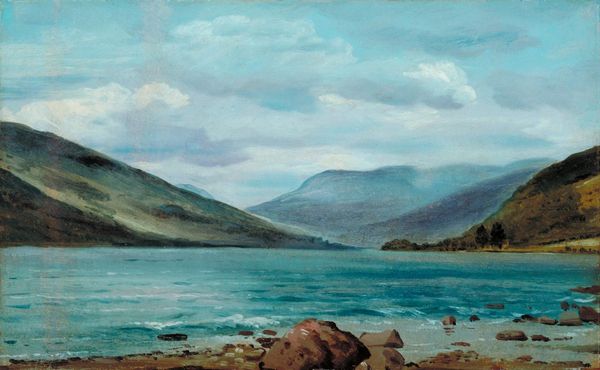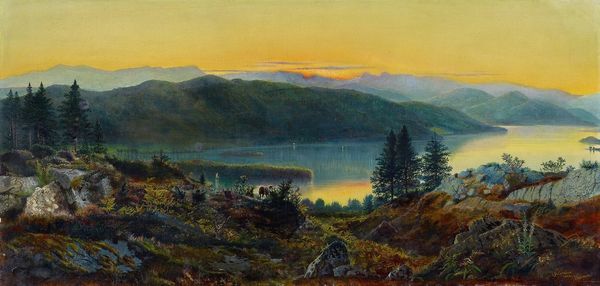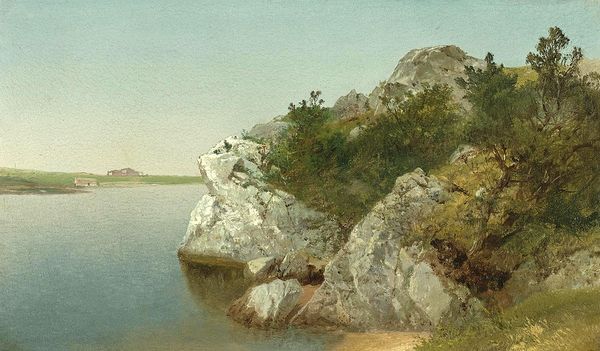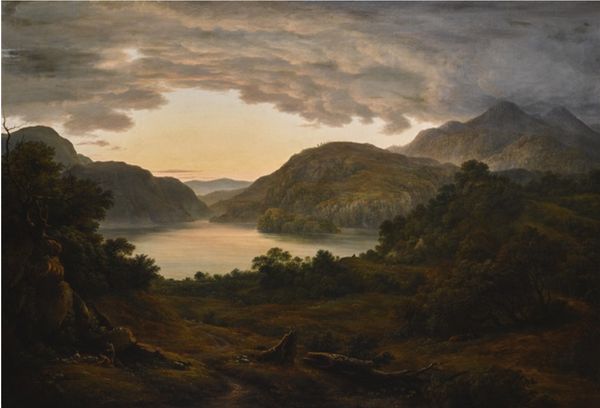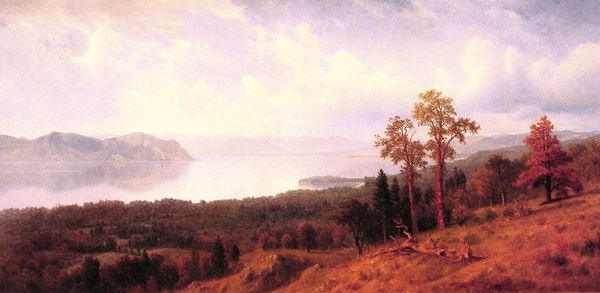
painting, oil-paint
#
painting
#
oil-paint
#
landscape
#
oil painting
#
romanticism
#
genre-painting
#
realism
Copyright: Public Domain: Artvee
Editor: This is Johan Christian Dahl’s "View from Pimonte," an oil painting from 1820. I’m immediately drawn to the vastness of the landscape, contrasted with the small figures of the shepherd and his flock. How do you interpret this work? Curator: This landscape presents a compelling intersection of Romanticism and the era's sociopolitical landscape. Dahl, painting during a period of intense social upheaval across Europe, including the aftermath of the Napoleonic Wars, positions humanity – represented by the shepherd – in a humbling relationship with nature's grandeur. Notice how Vesuvius looms—not just a geographical feature, but a potent symbol of unpredictable, potentially destructive forces. How does understanding that context shift your view? Editor: It makes me think about the precarity of life. The beauty is almost…threatening. Curator: Exactly! The Romantics often used landscapes to explore the sublime—that terrifying and awe-inspiring experience of nature's power. But there's also a commentary here, I believe, on land and labor. Who controls this landscape, who benefits from it? The shepherd and his sheep are small figures but their labour shapes the land and produces resources. Dahl doesn’t seem to celebrate aristocratic ownership or colonialism here, and may even subtly subvert it. Editor: So, beyond just a pretty picture, it’s also hinting at those deeper social structures. Curator: Absolutely. The painting exists within a specific historical moment where such dialogues about land, labor, and power were becoming increasingly urgent. Looking closely, what do you make of the almost idealized naturalism in representing the everyday toil in this scene? Does it make us question what and who is being excluded, perhaps even erased from visibility? Editor: I never considered it in terms of land and labour before. I was so focused on the scenery and the romanticism. That definitely adds another layer of understanding. Curator: These intersections – of the aesthetic and the political – are what make Dahl's work so relevant. Considering landscapes critically allows us to address a history of oppression and inequality that persists to this day.
Comments
No comments
Be the first to comment and join the conversation on the ultimate creative platform.
